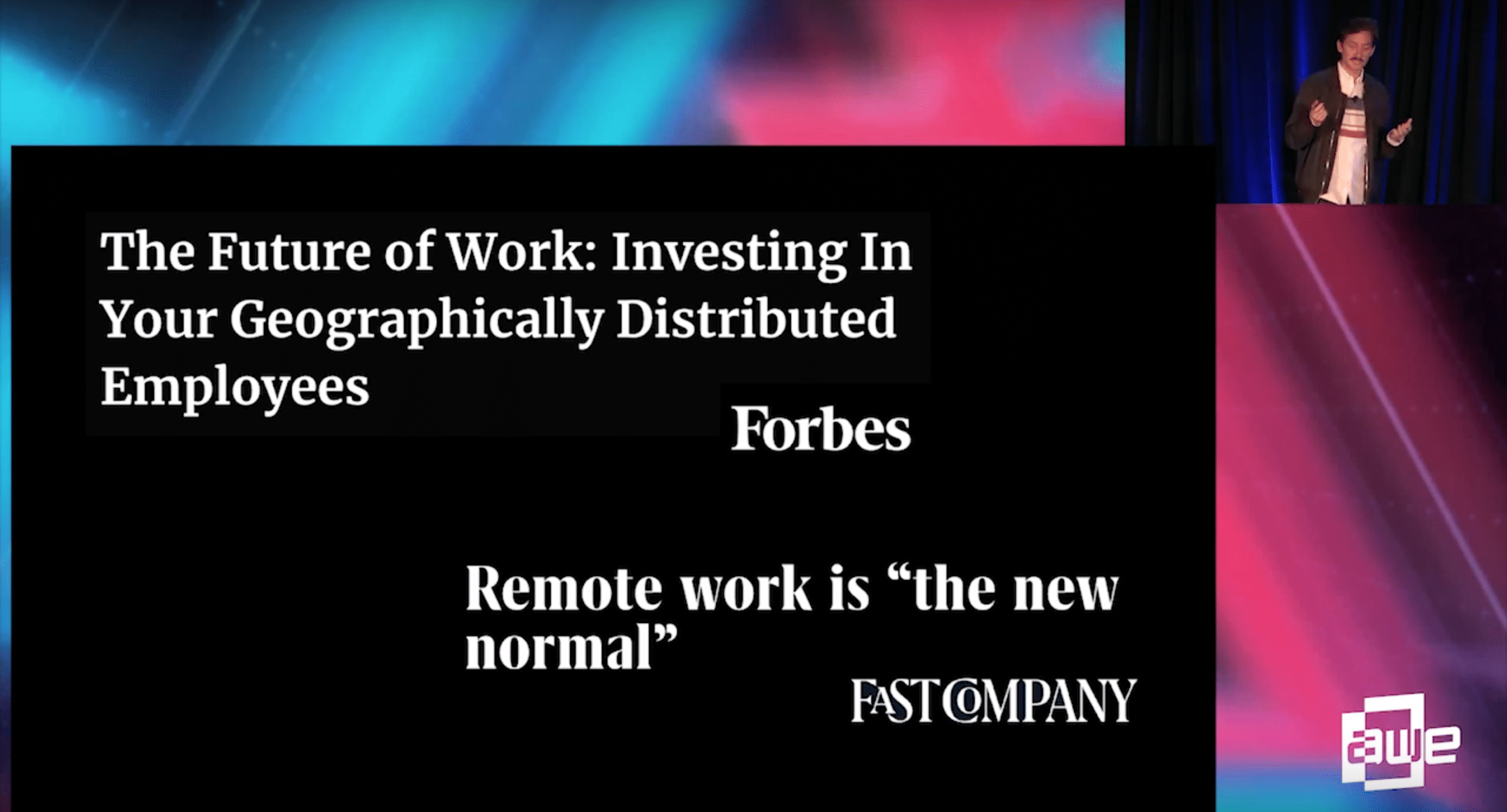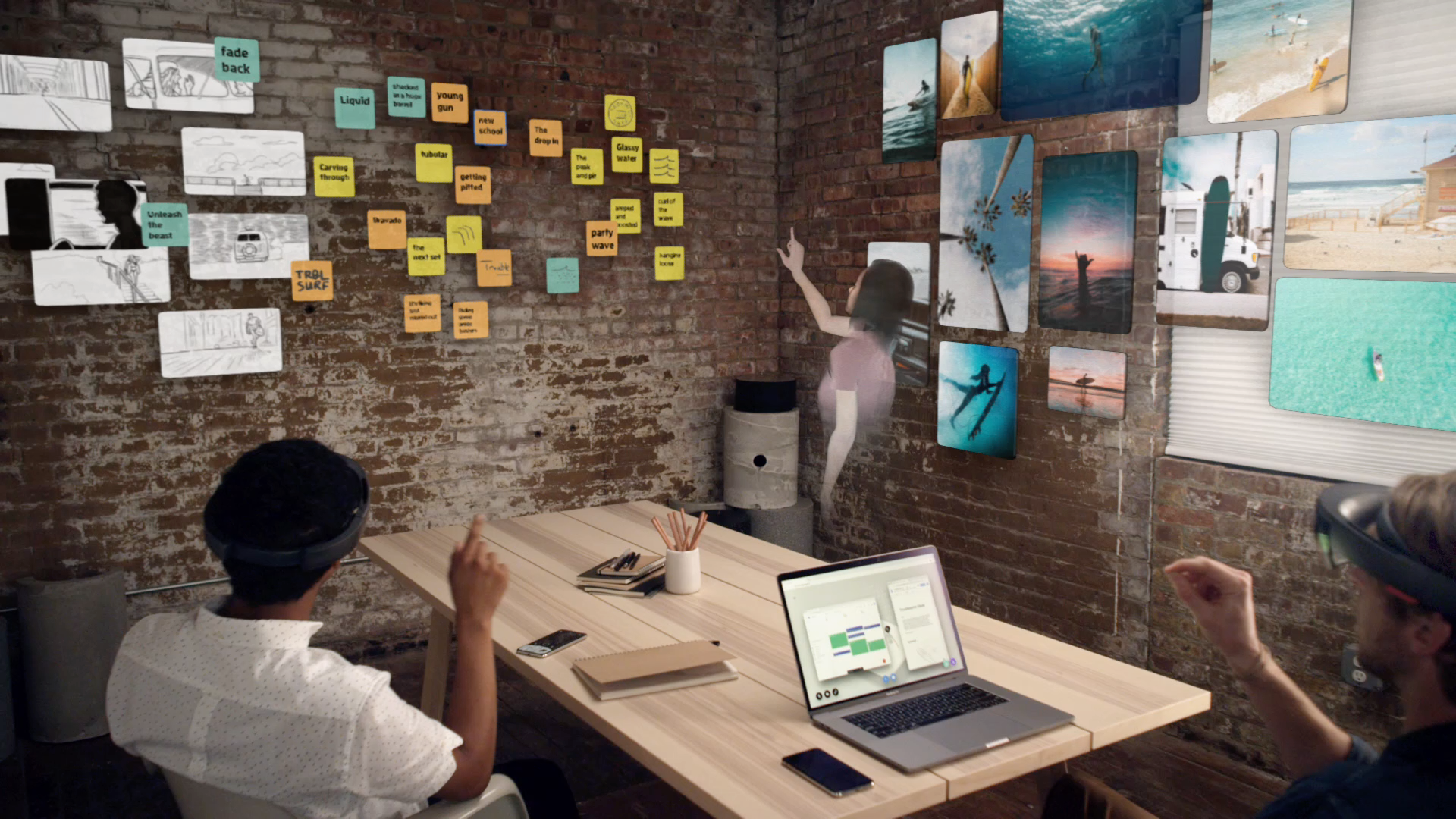Tech Vision is LSA’s series that spotlights emerging tech. Running semi-weekly, it reports on new technologies that LSA analysts track, including strategic implications for local commerce. See the full series here.
Last week, we posed the question if augmented reality can help home-services pros socially distance. With tools like Streem, they can diagnose issues and in some cases guide homeowners through easy fixes using “see what I see” AR tools on smartphones. But what about other professions?
Now it’s time to apply that same thought exercise to office workers. Of course, that’s a broad category and it’s hard to generalize. But there are AR tools emerging to tap into the best of remote work and “F2F” interaction in areas like project management, design and other flavors of corporate collaboration.
Tools include Spatial, which recently raised a $14 million Series A. It has a strong value proposition in normal times, including cost-efficient interaction for far-flung teams, and less travel strain and pollution. But the value is viewed in an entirely new light due to current shelter-in-place protocols.

Remote-work Tradeoff
Stepping back, one of AR’s promises is to bring far-flung colleagues together for interpersonal interactions. This could apply to startups and SMBs with remote teams. There’s otherwise a tradeoff between advantages of remote work (flexibility, cost) and effectiveness of in-person collaboration.
Spatial wants to make this less of a binary choice. Its workplace collaboration software uses AR to fill physical spaces like a conference room with digital content. This involves graphical elements that emulate productivity objects (think: post-it notes, video screens) and people, via animated avatars.
Pre-pandemic, more people than ever before were working remotely. Now that this is inflecting (potentially with longer-term permanence), tools like Zoom are booming. But Zoom and other industry-standard methods of remote collaboration miss out on key aspects of human communication.
“Remote work is increasingly the new normal,” said Spatial’s Jacob Lowenstein (pre-pandemic). “But good collaboration depends on a subtle magical human element that’s often lost. So the question is how can we inject a human element back into collaboration, and build tools that make it a central part of how we work.”

Virtualizing the Office
These are the pain points that set up Spatial’s collaborative AR workspaces. Conceptually, it’s parallel to AR-based visualization we hear a lot about in industrial contexts, but purpose-built for corporate settings. That can be brainstorming sessions, training, design sprints or an agile scrum.
“Each of these meetings is fundamentally doing the same thing,” said Lowenstein at the AWE conference, “which is getting people together, reviewing a lot of information and context-switching between a bunch of things you need to synthesize in order to go and make decisions.”
All of this sounds great but there are adoption barriers such as AR hardware like Microsoft’s Hololens. So Spatial is platform agnostic. By operating with everything from Hololens to iPads, it doesn’t saddle its own growth. Any communication tool will fail if one side of the conversation isn’t compatible.
“It’s going to take time to buy headsets and roll this out in your organization,” said Lowenstein during the same talk. “In the meantime, people shouldn’t be left out… this is a network-effect driven idea and if there isn’t someone else to meet with you in Spatial on the other end, that meeting ain’t going to happen.”

New Perspectives
This could also be the inflection that AR needs to get over early enterprise adoption humps. Though there are better things to worry about these days than the health of the AR industry, it and many other technologies could benefit in the long run from new perspective and adoption-by-necessity.
And we could all end up better off for it. Even in non-quarantine times (fingers crossed for near-term arrival), technologies like Spatial can bring better customer experiences and more efficient logistics & operations for startups and SMBs. It may just take a global crisis force that realization faster.
We’ll see more technologies and practices for which that statement applies… thus a hopeful silver lining to an otherwise difficult time. We’ll continue to look for and report on technologies and practices that could follow this pattern, and impact local commerce and the SMB SaaS players that power it.



